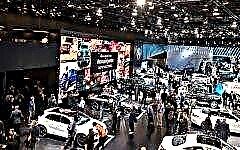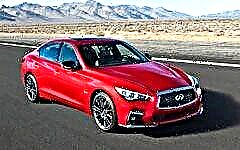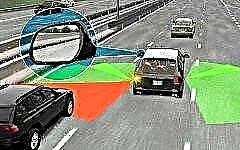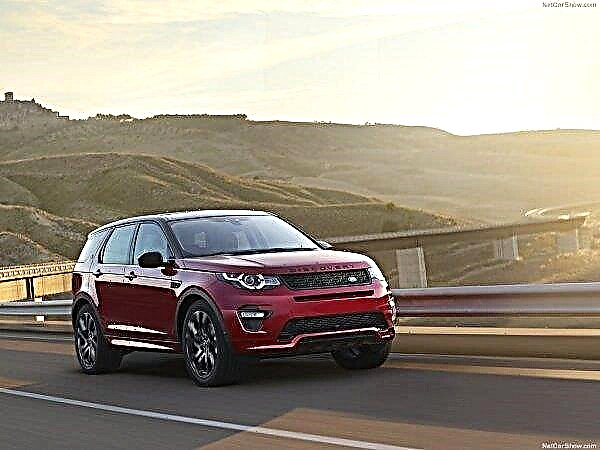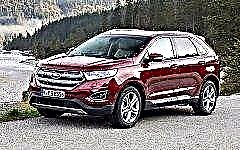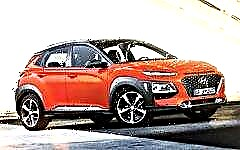

The content of the article:
- Dimensions and weight
- Dynamic characteristics
- Brake system
- Optics
- Prices and configuration
The official world premiere of the new Hyundai Kon crossover took place on June 12, 2017, but in Europe the novelty appeared relatively recently. The second car show was in 2018 at the Geneva Motor Show. In all likelihood, the new product will not appear in Russia, as it will compete with Hyundai Creta. A fully electric version of the compact crossover will most likely not be delivered.

Apart from the fully electric version, two turbocharged gasoline engines and one diesel engine can be installed under the hood at the buyer's choice. A 7-speed robotized transmission or a 6-speed manual one works in a pair.
Dimensions and weight 2018-2019 Hyundai Kona

According to the reviews of motorists and the manufacturer itself, the new Hyundai Kona crossover is somewhat reminiscent of the Hyundai Creta, but at a price it will be more expensive due to the configuration and functionality. The crossover is only available in one body, there are no long or short options.
| Dimensions and weight of the crossover Hyundai Kona 2019-2020 | |
| Length, mm | 4165 |
| Width, mm | 2052 (excluding 1800mm side mirrors) |
| Height, mm | 1550 |
| Front wheel track, mm | 1559 |
| Rear wheel track, mm | 1568 |
| Wheelbase, mm | 2600 |
| Clearance, mm | 170 |
| Number of seats | 5 |
| Curb weight, kg | 1233 |
| Trunk volume, l | 361 |
| Fuel tank volume, l | 50 |

For comparison, let's point out the dimensions and weight of the Hyundai Creta, which is very popular not only in Russia, but also in the neighboring countries. Today, Creta is considered the most popular crossover in the Russian Federation and has firmly held its leading position from the very beginning of sales.
| Dimensions and weight crossover Hyundai Creta 2019-2020 | |
| Length, mm | 4280 |
| Width, mm | 1780 (excluding side mirrors) |
| Height, mm | 1630 |
| Front wheel track, mm | 1544 |
| Rear wheel track, mm | 1558 |
| Wheelbase, mm | 2590 |
| Clearance, mm | 190 |
| Number of seats | 5 |
| Curb weight, kg | 1345-1552 |
| Trunk volume, l | 402 |
| Fuel tank volume, l | 55 |
As you can see, the difference between the new Hyundai Kona and Hyundai Creta is minimal, both in size and weight. Small differences in the size of the luggage compartment, this is what Creta wins so far.
Technical and dynamic characteristics of Hyundai Kona 2019-2020

If we talk about the full range of Hyundai Kona trim levels, then the buyer is offered a fully electric version of the crossover, a diesel or gasoline version. In all likelihood, they will not bring a car to Russia, but only gasoline and diesel configurations will be available in the nearest countries. The electric version of the Hyundai Kon crossover remains a big question for now due to demand and cost.
| Technical and dynamic characteristics of Hyundai Kona 2019-2020 | |||
| Engine | 1.0 T-GDI | 1.6 T-GDI | 1.6 CRDi |
| Fuel | petrol | petrol | diesel |
| Volume, l | 1,0 | 1,6 | 1,6 |
| Number of cylinders | 3 | 4 | 4 |
| Power, h.p. | 120 | 177 | 136 |
| Torque, Nm | 172 | 265 | 280 |
| Transmission | 6 tbsp. Manual transmission | 7 tbsp. Automatic transmission | 7 tbsp. Automatic transmission |
| Drive unit | front | front | front |
| Maximum speed, km / h | 181 | 210 | 205 |
| Acceleration to 100 km / h, s | 12 | 7,7 | 7,9 |
| Fuel consumption Hyundai Kona 2019-2020 | |||
| City consumption, l | 6,0 | 8,0 | 6,9 |
| Consumption on the highway, l | 4,7 | 6,0 | 5,9 |
| Mixed cycle, l | 5,2 | 6,7 | 6,3 |
| CO2 emission, g / km | 117 | 153 | 144 |
For comparison, we present the technical characteristics of the electric version of the Hyundai Kona Electric crossover.

| Technical and dynamic characteristics of Hyundai Kona Electric 2019 | ||
| Engine | 39,2 | 64 |
| Power, h.p. | 136 | 204 |
| Torque, Nm | 395 | 395 |
| Transmission | reducer | reducer |
| Drive unit | front | front |
| Maximum speed, km / h | 155 | 167 |
| Acceleration to 100 km / h, s | 9,7 | 7,6 |
| Power reserve | 289 | 449 |
According to the manufacturer, the new compact crossover Hyundai Kona is already on sale in the nearest countries, for example, in Ukraine, but in Russia the crossover will sooner not appear.
Braking system and suspension

The new Hyundai Kona crossover is a co-platform with the well-known Kia Stonic. The engineers have well thought out the basis, thanks to which it is possible to compactly arrange the technical elements of the new Kona, thereby gaining maximum free space for passengers. The luggage compartment isn't quite as big as originally expected, though. Regardless of the configuration of the new Hyundai Kon, a MacPherson suspension is installed in the front, a torsion beam or an independent multi-link suspension can be at the rear.
As for the braking system of the crossover, there are disc brakes everywhere, ventilated at the front, but ordinary ones at the rear. Likewise, depending on the configuration, the Kona crossover can be equipped with a mechanical or electromechanical handbrake. At the heart of the crossover, 17 ″ alloy wheels are installed as standard, 18 ″ wheels with a new modern design are available as an option or in the top-end configuration.
Optics of the new crossover

Special attention is drawn to the optics of the new Hyundai Kona. Starting with the first prototype presented, the manufacturer surprised many with the unusual shape of the headlights. They were specially divided into sectors, thereby creating a unique design of the front end. The upper tier is reserved for the dimensions and LED daytime running lights, the headlights of the low and high beam are located a little lower. To emphasize the design of the crossover, the foglights were installed in the center of the bumper at the width of the radiator grill.
The hind feet are also made in the Hyundai style, although there is also its own uniqueness, which was not previously found in other models of the company. The designers of Hyundai Kona installed one part of the feet on top, where they should be. Elongated horizontally, with LED elements at the base and pronounced sectors. The second half of the stops were located at the level of the wheels, there are also direction indicators, a reverse indicator and rear fog lights.
Prices and configurations Hyundai Kona 2019-2020

While it is reliably known about the emergence of 4-oh complete sets, with internal combustion engines. Despite the different variations, the manufacturer announced the supply of the Hyundai Kon with a gasoline and diesel engine, paired with a mechanical and robotic transmission. At the same time, the drive remains only the front one, although there is the prospect of an all-wheel drive version.
| Prices and configurations of the Hyundai Kona crossover 2019-2020 | ||
| Complete set | Filling | Price from, rub. |
| Express | 1.0 T-GDi, 6 st. Manual transmission 2WD | 1395103 |
| Dynamic | 1.6 T-GDi, 7 art. Automatic transmission 2WD | 1584536 |
| Elegance | 1.6 T-GDi, 7 art. Automatic transmission 2WD | 1695876 |
| Elegance | 1.6 CRDi, 7 art. Automatic transmission 2WD | 1634822 |
| Top | 1.6 T-GDi, 7 art. Automatic transmission 2WD | 1900773 |
As for the electric configuration of the Hyundai Kona Electric, the average price starts at $ 35,900, and the top-end version of the electric crossover will cost from $ 47,100. One drawback is that, regardless of the configuration of the electric car, it will only be front-wheel drive.

The configurations of the Hyundai Kona with an internal combustion engine differ from each other both in technical characteristics and in a functional set. The top-end configurations are equipped with modern comfort systems, active safety systems and driver assistance. As already mentioned, the new Hyundai Kona crossover will not officially appear in dealerships in Russia. Initially, information repeatedly surfaced that this Hyundai Kona model would not come to Russia, since it would simply become a competitor for the same Creta, respectively, the sales of the last crossover would fall. Now this information has been officially confirmed. See also the full review of the new 2018-2019 Hyundai Kona crossover.
Hyundai

